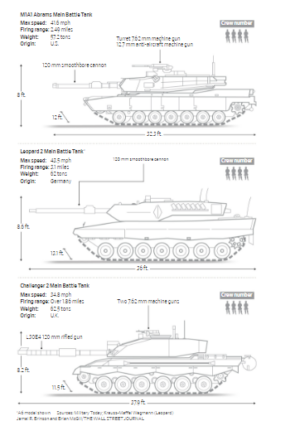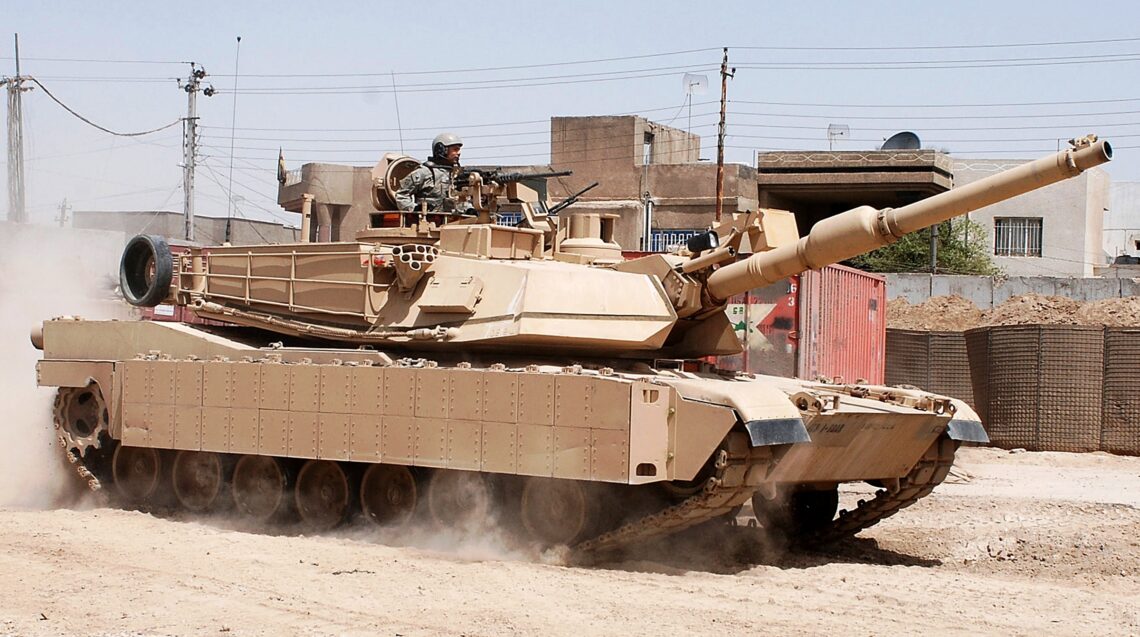Document has previously written about how the war in Ukraine suggests that the tanks are about to meet their Agincourt.
In the modernised warfare we see in Ukraine, it is both cheaper and less risky for soldiers to use other weapons, especially drones. We are therefore entering a new age of war, as Document described it a month after the Russians invaded Ukraine.
Although tanks helped Ukraine advance into Russia, the army is rethinking how the powerful vehicles are made and used after being humiliated in battle in recent times, writes the Wall Street Journal.
Tanks were the king of the battlefield as recently as the Iraq war. But the proliferation of drones in Ukraine has meant the large, noisy vehicles can be spotted and attacked within minutes. Advanced Western tanks have therefore been used only sparingly in the combat they were intended to shape, and many of those that have been deployed in battle have been damaged, destroyed or captured by the enemy.
The armies of various countries have sought to equip their tanks with technology that enables them to detect and protect themselves from drones, while also exploring design changes to make the armoured vehicles more manoeuvrable. Tactics on the battlefield are already changing, and lessons learnt in Ukraine are being integrated into the training.
– In the short term, we absolutely need to make some adjustments to maintain the survivability of our armoured formations, says General James Rainey.
He leads the U.S. Army Futures Command, which looks at how the army can be equipped and transformed.
Multiple signs show how drones are reshaping warfare. Adapting tanks to the drone era is very important for Western armies, which have designed plans where tanks are at the heart of their land strategy.
The Norwegian Armed Forces have recently signed a purchase agreement for new tanks, while what we really need is better logistics, better air defence and a huge increase in the number of infantrymen. But tanks are not necessarily history, they have adapted to new adversaries before, including aircraft and anti-tank missiles.
The problem is time: Changing the tanks takes time, and with commissions and advisory groups set up, time is being wasted to no effect.
In recent weeks, tanks have helped Ukrainian forces sweep through the Kursk region of Russia, an area where a very decisive battle during World War II took place in 1943.
Ukraine’s use of tanks shows how a military vehicle first launched by the British Army in 1916 still has a role to play in rapid manoeuvres, although in this case the Kiev forces were met by lightly armed conscripts with little drone coverage.
For much of the war, Ukrainian forces equipped with the best Western tanks have been put out of action in a matter of hours.
When the crews of Ukraine’s 47th Mechanised Brigade were told last year that they would be receiving an Abrams tank, they hoped the American machine would enable them to finally puncture the Russian lines.
But that hasn’t happened. Of the 31 Abrams tanks the US has sent to Ukraine, six have been destroyed. These tanks cost $10 million apiece.
– As soon as you get out on the road, a drone sees you, and then you get hit by artillery, mines, anti-tank missiles, drones and guided aerial bombs, says the Ukrainian driver of an Abrams, which has the call sign Smilik.
In addition, 12 out of 18 newer German-made Leopards have been destroyed or damaged.</p
At the beginning of the war, commanders often hid their tanks and other armoured vehicles by digging trenches and camouflaging them. They would then emerge to fire on the enemy when they came into range.
– Now everything is monitored, so you can’t even dig a hole to hide, says Lubomyr Stakhiv, a subordinate sergeant in another brigade.
Now the crews on the tanks work only to hide from the enemy. This is not very effective on the battlefield. The very size of the tanks makes them easy targets for drones and other aerial attacks.
– You can’t leave tanks in the open for a moment. When the movement stops, you have to be under the trees, you have to find cover, says Colonel Juhana Skyttä, commander of Finland’s armoured brigade.
In the United States, a lot of work is being done to try and make tanks lighter and more manoeuvrable. To a certain extent, the U.S. Army has been able to do this, but not enough to solve the problems.

Tanks are also being worked on to make them harder to detect, from changing how they are painted to reducing their electronic signatures, says Doug Bush, the US Army’s assistant secretary for acquisition, logistics and technology.
Swedish Saab is experiencing great interest in a camouflage net it offers that makes it harder to see and detect tanks.
But several senior US Army officers say the military is too heavily invested in tanks. The U.S. Marine Corps gave up its tanks in active service four years ago to improve the agility of its forces. Other countries have also reduced the number of tanks.
Norway decided last year to reduce the number of Leopards on order and instead invest in missile defence systems, something many argued for even before the defence chief decided to order new tanks.
Despite the tank’s vulnerabilities, the U.S. Army says they still have an important role to play.
In conflicts where adversaries have armoured vehicles, the US will need tanks to deliver “the shock effect to penetrate and consolidate quickly”, says Lieutenant General Kevin Admiral, who commands the Army’s III Armored Corps at Fort Cavazos in Texas.
Thus, we are likely to once again see the proud cavalrymen ride to their own doom, just as the French knights did during the famous Battle of Agincourt just over 600 years ago, on Saint Crispin’s Day, 25 October 1415.
We few, we happy few, we band of brothers;
For he to-day that sheds his blood with me
Shall be my brother; be he ne’er so vile,This day shall gentle his condition:
And gentlemen in England now a-bed
Shall think themselves accursed they were not here,And hold their manhoods cheap whiles any speaks
That fought with us upon Saint Crispin’s day.

